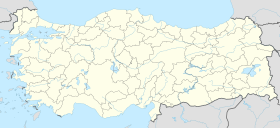Troy (mythology)

The walls of the acropolis belong to Troy VII, which is identified as the site of the Trojan War (c. 1200 BC).
|
|
| Location | Tevfikiye, Çanakkale Province, Turkey |
|---|---|
| Region | Troad |
| Coordinates | 39°57′27″N 26°14′20″E / 39.95750°N 26.23889°ECoordinates: 39°57′27″N 26°14′20″E / 39.95750°N 26.23889°E |
| Type | Settlement |
| History | |
| Founded | 3000 BC |
| Abandoned | 500 AD |
| Periods | Early Bronze Age to Byzantine Empire |
| Site notes | |
| Website | Troia Archaeological Site |
| Official name | Archaeological Site of Troy |
| Type | Cultural |
| Criteria | ii, iii, vi |
| Designated | 1998 (22nd session) |
| Reference no. | 849 |
| Region | Europe and Asia |
Troy (Ancient Greek: Τροία, Troia and Ἴλιον, Ilion, or Ἴλιος, Ilios; Latin: Trōia and Īlium;Hittite: Wilusha or Truwisha;Turkish: Truva or Troya) was a city situated in the far northwest of the region known in late Classical antiquity as Asia Minor, now known as Anatolia in modern Turkey, near (just south of) the southwest mouth of the Dardanelles strait and northwest of Mount Ida. The present-day location is known as Hisarlik. It was the setting of the Trojan War described in the Greek Epic Cycle, in particular in the Iliad, one of the two epic poems attributed to Homer. Metrical evidence from the Iliad and the Odyssey suggests that the name Ἴλιον (Ilion) formerly began with a digamma: Ϝίλιον (Wilion); this is also supported by the Hittite name for what is thought to be the same city, Wilusa.
A new capital called Ilium was founded on the site in the reign of the Roman Emperor Augustus. It flourished until the establishment of Constantinople and declined gradually in the Byzantine era.
...
Wikipedia

